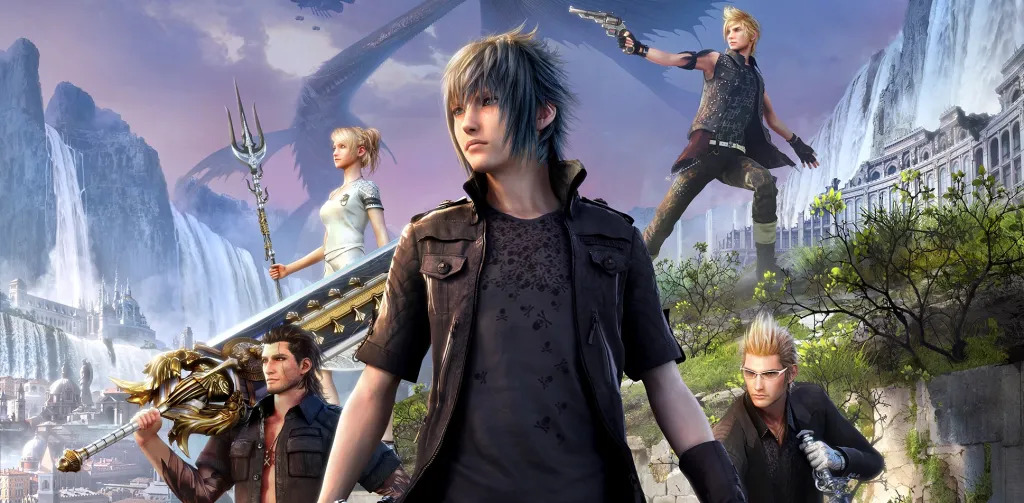Imagine a game where every decision shapes your destiny, where characters feel as real as people, and the storyline pulls you in with as much force as a favorite novel. In the realm of story-driven games, these aren’t just dreams – they’re expectations.
This genre has redefined the gaming experience, blending storytelling with interactive mechanics to immerse players like never before. But what makes story-driven games so unique? And why do they hold such a significant place in the gaming industry today?
Today, we’ll explore the world of story-driven games, examining how these experiences connect with players on emotional levels, build loyal communities, and push the boundaries of storytelling in gaming.
Don’t miss out: The biggest video game companies that shape the industry
The power of narrative

The emotional impact
Story-driven games have the unique ability to evoke powerful emotions, which elevates the gaming experience beyond mere entertainment. These well-crafted stories often carry emotional weight that resonates with players, making them feel the highs and lows of the characters’ journeys.
Games like The Last of Us or Life is Strange are prime examples of titles where the narrative impact is profound, sparking empathy and connection to the character’s struggles and triumphs. By creating emotionally charged scenes, story-driven games foster a sense of involvement that few other forms of media can match.
Character development
At the heart of every memorable story-driven game is a cast of characters who feel real, with complex personalities and relatable motives. Character development is a crucial element that transforms a plot into a dynamic journey.
When players encounter multi-dimensional characters with compelling backstories, it’s easier to invest emotionally. Character arcs also add depth, as players witness these individuals evolve over time, often shaped by the choices made during gameplay. This depth of development drives the immersive quality that these games are celebrated for.
Worldbuilding
Worldbuilding is another critical aspect that makes such games remarkable. Developers craft detailed worlds that feel alive and consistent, filled with lore, landscapes, and cultural nuances.
From the dystopian lands of Fallout to the mythical realms of The Witcher, these settings are meticulously designed to transport players into another universe. This immersive environment is not just a backdrop; it’s an integral part of the storytelling, providing context and enriching the narrative with every interaction and discovery.
Player agency
A defining feature of story-driven games is player agency – in other words, the ability of players to make decisions that influence the story. Player choices, whether they’re dialogue options or actions, can dramatically alter the course of the narrative.
Games like Mass Effect and Detroit: Become Human are known for their branching storylines, where decisions have real consequences. This sense of agency empowers players, giving them a stake in the narrative and making the journey feel personal.
The mechanics of storytelling

Pacing
Story-driven games require careful pacing to keep players engaged. Effective pacing alternates between moments of action and calm, allowing players to digest the narrative while building suspense. Poor pacing can break immersion, while well-timed plot developments keep players engaged.
Dialogue and writing
The quality of dialogue and writing can make or break the whole experience. Authentic and well-crafted dialogue brings characters to life, creating a genuine connection with players.
Games like The Witcher 3 and Firewatch have garnered praise for their engaging dialogues and complex writing. Through thoughtful dialogue, these games communicate character personalities, emotions, and relationships, enhancing the narrative.
Cutscenes and cinematics
Cutscenes and cinematics play an important role in delivering story elements in a visually impactful way. High-quality cinematics offer players a movie-like experience that adds depth to the plot, character expressions, and emotional scenes.
While some may argue that cutscenes disrupt the interactivity of gaming, well-placed cutscenes often serve as highlights that propel the story forward. Games like Final Fantasy XV and God of War use cinematics effectively to showcase intense, emotional moments that would be challenging to convey through gameplay alone.
Interactive storytelling
Perhaps the most innovative aspect of story-driven games is interactive storytelling, where the player’s actions drive the narrative forward. Unlike other media, story-driven games allow for player interactivity, where choices shape the storyline, often leading to multiple endings.
Titles such as Until Dawn and Heavy Rain exemplify interactive storytelling, placing players at the heart of the experience. This level of interactivity creates a dynamic narrative where players feel truly involved, adding a layer of personalization that’s unique to gaming.
The benefits of story-driven games

Enhanced player engagement
Story-driven games captivate players with their narrative depth, keeping them engaged for hours on end. By immersing players in emotionally compelling stories, these games foster a level of involvement that keeps them returning.
Unlike gameplay-driven titles, where players focus on skill, these ones retain players by involving them emotionally. This engagement builds a long-lasting bond with the game, often leaving a lasting impact.
Memorable experiences
Story-driven games are known for creating unforgettable moments. Whether it’s the heartbreaking conclusion of a character’s arc or a twist that reshapes the storyline, these games create experiences that resonate long after the final scene.
This memorability has a significant impact, turning casual players into loyal fans. Games like Bioshock and Shadow of the Colossus continue to be remembered for their powerful storytelling years after their release.
Building community
Narratives in story-driven games often foster a sense of community among players. Shared experiences, such as discussing plot twists or interpreting character motivations, allow players to connect with each other.
Story-driven games inspire conversations, analysis, and fan theories, creating a community bonded by a shared love for the story. Online forums, social media, and fan groups thrive on these shared narratives, strengthening player loyalty and expanding the game’s reach.
Marketing and branding
The compelling nature of story-driven games also has a marketing advantage – given how engaging narratives can attract new players who are looking for more than just traditional gameplay. Titles with memorable stories have the potential to become iconic, thus drawing attention from both gaming and non-gaming audiences.
This narrative-driven branding can increase visibility and create a unique identity in the market, as seen with games like The Legend of Zelda: Breath of the Wild and Horizon Zero Dawn.

Story-driven games and the power of narrative
Story-driven games have evolved from simple plots to deeply immersive experiences, where players can emotionally invest in characters, explore rich worlds, and shape their narratives. These games offer players more than entertainment; they deliver memorable stories, create communities, and drive innovation within the industry.
As story-driven games continue to push boundaries, their importance in the gaming landscape will only grow. Developers are beginning to explore new ways to bring stories to life, and with each innovation, the impact of story-driven games on players becomes more profound.
For those interested in exploring this dynamic genre or even developing their own story-driven game, Main Leaf is here to help. With our expertise in game development, we’re ready to bring any narrative to life, one immersive story at a time. All you must do is contact our team through the form below!

